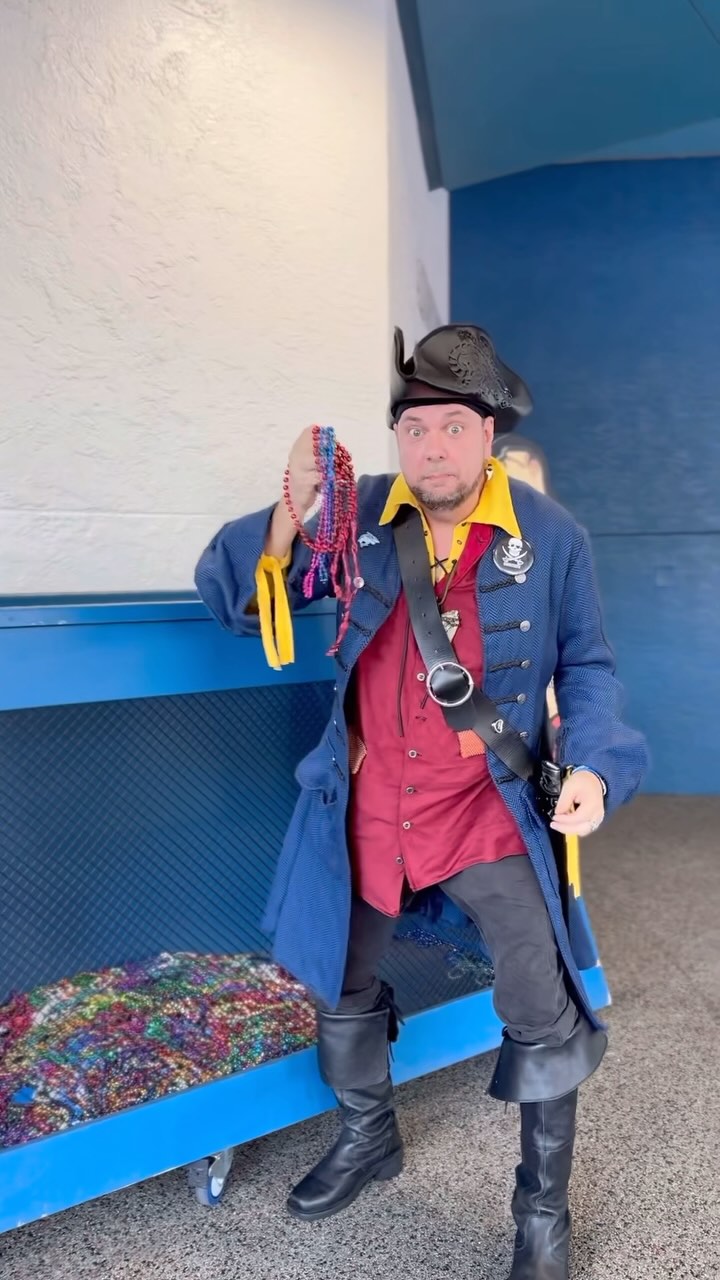- The Gasparilla Pirate Festival: A vibrant celebration with a conservation twist, offering opportunities for environmental stewardship.
- Beads Collection: Encouraging sustainable practices by turning beads into discounted aquarium visits.
- Role of Aquariums in Wildlife Conservation: Highlighting Tampa’s initiative and its impact on marine life protection.
- Environmental Concerns with Bead Pollution: Understanding the ecological impact of beads on local ecosystems.
- Educational Initiatives and Community Involvement: The importance of community actions and education in conservation efforts.
The Gasparilla Pirate Festival is a longstanding tradition in Tampa, Florida, drawing thousands of visitors each year. Its lively pirate-themed parade and activities make it a significant cultural event. However, this festival is also taking a unique approach to environmental stewardship by partnering with local institutions to promote sustainable practices. At the heart of this initiative is the collection of beads—a staple of any Gasparilla celebration—aimed at reducing waste and promoting eco-friendly practices. Visitors are encouraged to collect these beads and take them to the Aquarium, where they can exchange them for a discount on admission tickets. This initiative is part of the City of Tampa’s “Bead-Free Bay” program, demonstrating a commitment to conserving local marine environments.
The tradition of tossing beads during parades may seem harmless at first glance, but it poses significant environmental challenges. When these beads end up in waterways, they can severely impact marine ecosystems. Made from various plastics and synthetic materials, beads break down slowly, releasing harmful chemicals into the water. These pollutants can harm aquatic life, including fish and marine mammals, that mistake beads for food. Consequently, understanding and addressing this issue is crucial for preserving local ecosystems. Each year, volunteer groups and environmental organizations work diligently to clean up the remnants of the festivities, emphasizing the importance of sustainable enjoyment.
Aquariums play a pivotal role in wildlife conservation and education, serving as a hub for marine life protection. The Tampa aquarium’s involvement in the Bead-Free Bay initiative is a testament to its dedication to preserving marine habitats. By offering incentives like discounted admission in exchange for collected beads, the aquarium not only promotes environmental responsibility but also fosters community engagement. Efforts like these are essential to raising awareness about the impact of human activities on marine ecosystems. The collected beads are often recycled or repurposed, channeling what could have been pollutants into resources for educational purposes.
Environmental education initiatives during events like Gasparilla are vital for fostering community involvement and awareness. By engaging visitors in conservation efforts, organizers offer a hands-on learning experience that highlights the significance of protecting marine life. Educational programs at the aquarium complement this by providing insights into the diversity of marine species, their roles in ecosystems, and the threats they face from human activities. Community-driven actions, such as bead collection and recycling, are instrumental in nurturing an environmentally conscious society.
Bead pollution poses a significant ecological challenge, impacting both terrestrial and aquatic environments. When not disposed of responsibly, beads contribute to landfill waste and can leach toxic substances into soil and water systems. Efforts to combat this problem include promoting alternative materials for beads, such as biodegradable options, and encouraging responsible disposal through recycling and repurposing initiatives. Public education campaigns play a crucial role in altering consumer behaviors and fostering a culture of sustainability. By integrating conservation messages into popular cultural events like Gasparilla, organizers can effectively reach a broader audience and drive home the importance of eco-friendly practices.
Gasparilla’s eco-friendly approach is a prime example of how community events can integrate environmental stewardship into their core activities. Turning the spotlight on the environmental impact of festival traditions can pave the way for a more sustainable future. By engaging the public in fun, educational activities that have a positive environmental impact, Gasparilla sets a precedent for other festivals worldwide. Partnerships between festival organizers, local governments, and environmental organizations are critical to the success of such initiatives, demonstrating the power of community collaboration in achieving conservation goals.
In summary, the Gasparilla Pirate Festival is not just a celebration but an opportunity for environmental activism. Through programs like Bead-Free Bay, the festival promotes sustainable practices and raises awareness about ecological concerns. Tampa’s aquarium initiative complements this by offering education and engaging visitors in conservation efforts. By transforming what could be an environmental hazard into a tool for positive change, the festival exemplifies how cultural events can contribute to the broader goals of wildlife conservation and sustainable community development.
*****
Source Description
Heading to Gasparilla? Don’t forget to collect those beads and bring them to the Aquarium for 50% off up to 4 general admission tickets per group!
Part of the @cityoftampa’s Bead-Free Bay, you can turn your Gasparilla loot into an ocean of memories 🐙


